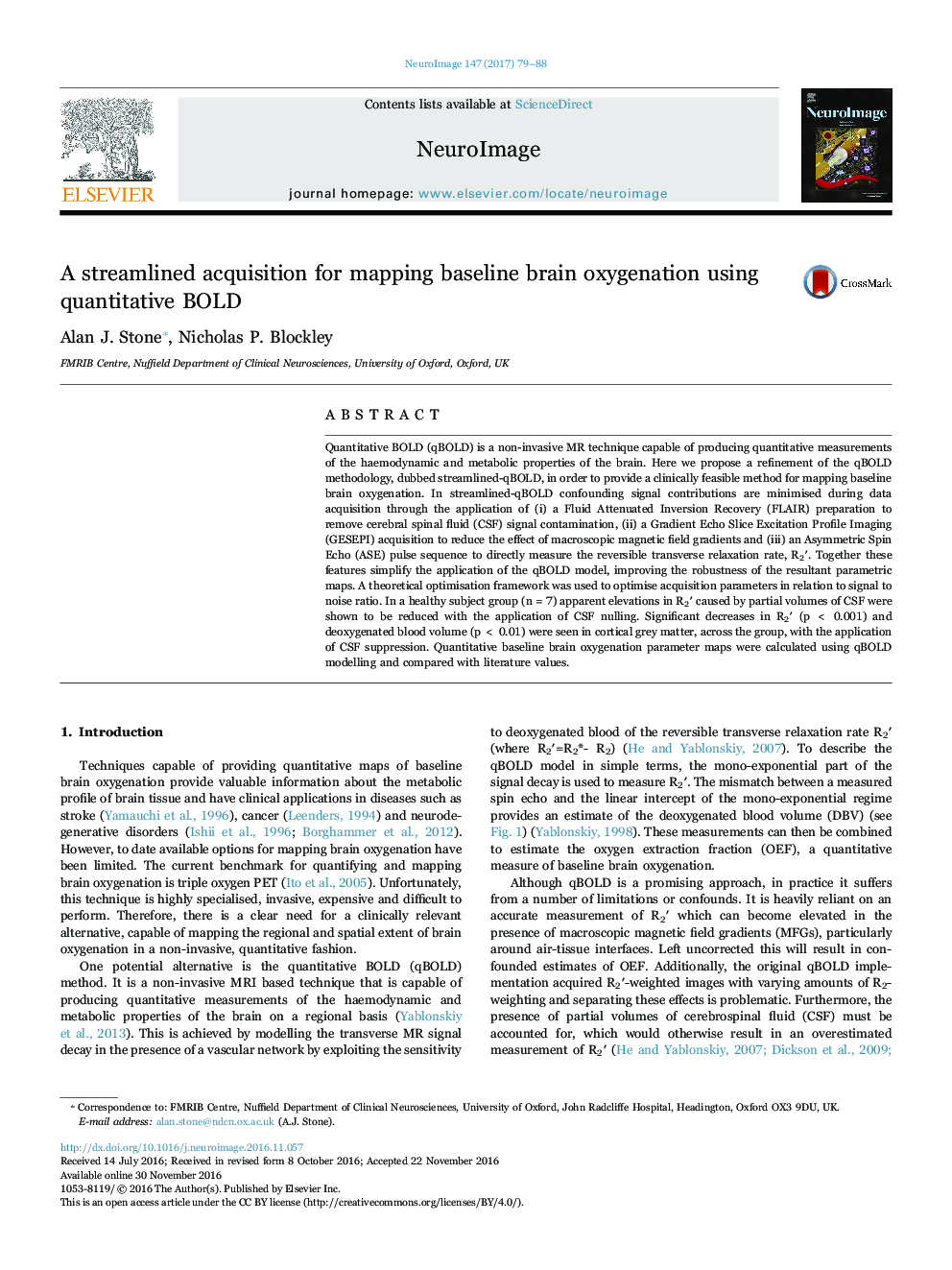| Article ID | Journal | Published Year | Pages | File Type |
|---|---|---|---|---|
| 5631485 | NeuroImage | 2017 | 10 Pages |
â¢qBOLD is capable of producing quantitative measurements of brain oxygenation.â¢Confounding signals originate from CSF, macroscopic field inhomogenieties and R2.â¢Streamlined-qBOLD proposes to minimise confounding signals during data acquisition.â¢This is achieved using a FLAIR-GASE acquisition.â¢Baseline brain oxygenation maps are shown using this clinically feasible method.
Quantitative BOLD (qBOLD) is a non-invasive MR technique capable of producing quantitative measurements of the haemodynamic and metabolic properties of the brain. Here we propose a refinement of the qBOLD methodology, dubbed streamlined-qBOLD, in order to provide a clinically feasible method for mapping baseline brain oxygenation. In streamlined-qBOLD confounding signal contributions are minimised during data acquisition through the application of (i) a Fluid Attenuated Inversion Recovery (FLAIR) preparation to remove cerebral spinal fluid (CSF) signal contamination, (ii) a Gradient Echo Slice Excitation Profile Imaging (GESEPI) acquisition to reduce the effect of macroscopic magnetic field gradients and (iii) an Asymmetric Spin Echo (ASE) pulse sequence to directly measure the reversible transverse relaxation rate, R2â². Together these features simplify the application of the qBOLD model, improving the robustness of the resultant parametric maps. A theoretical optimisation framework was used to optimise acquisition parameters in relation to signal to noise ratio. In a healthy subject group (n = 7) apparent elevations in R2â² caused by partial volumes of CSF were shown to be reduced with the application of CSF nulling. Significant decreases in R2â² (p < 0.001) and deoxygenated blood volume (p < 0.01) were seen in cortical grey matter, across the group, with the application of CSF suppression. Quantitative baseline brain oxygenation parameter maps were calculated using qBOLD modelling and compared with literature values.
